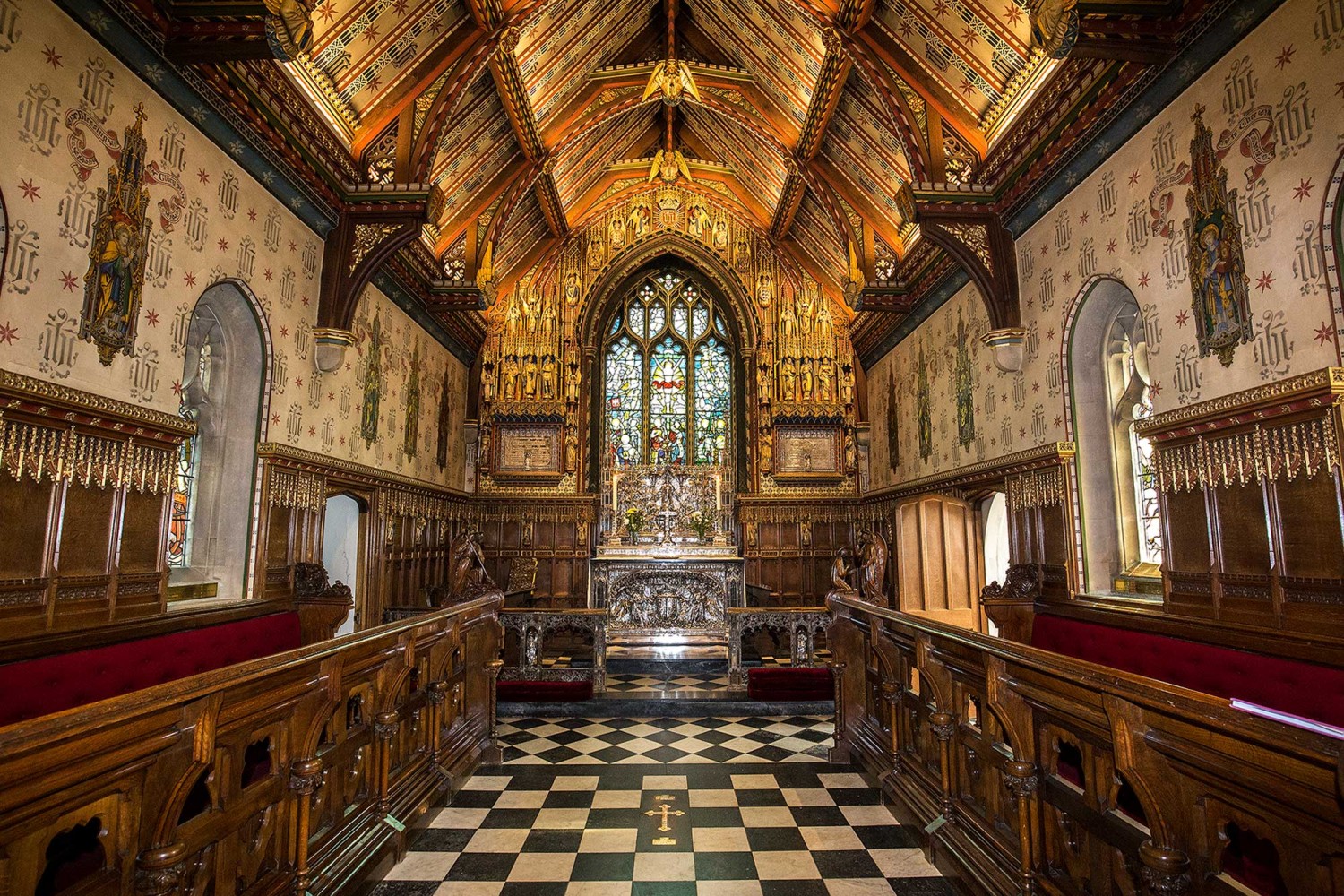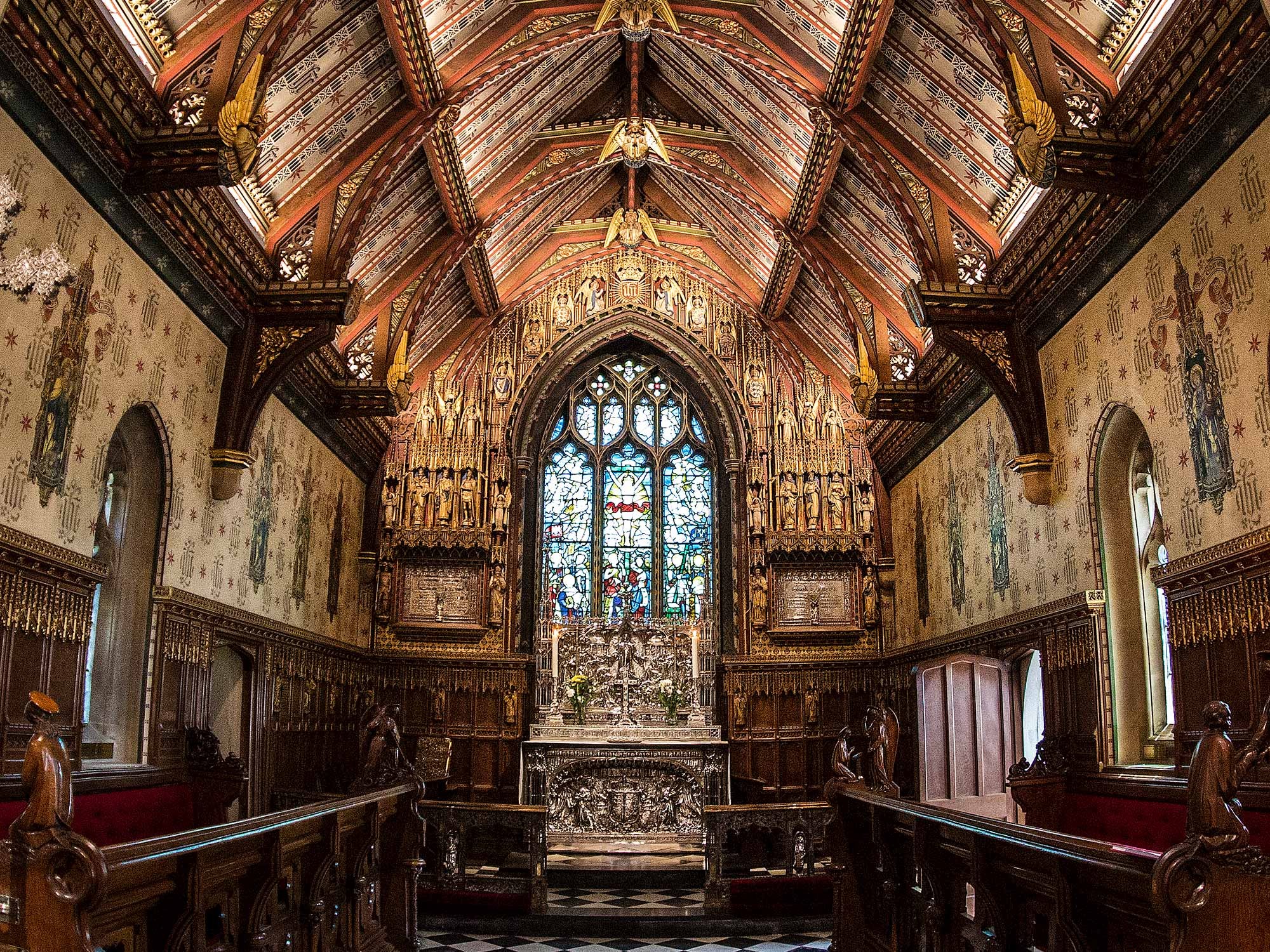
St Mary Magdalene, Sandringham
The church of St Mary Magdalene in Sandringham is regularly attended by the royal family when they are in residence, and glitters with gilded woodwork and a silver altar.
Take a short walk along an avenue lined with fine old Scotch firs, through the beautiful wooded grounds west of Sandringham House, and you’ll find the historic church of St Mary Magdalene. The church has stood in this spot, in different forms, since the fourteenth century, but the building you can see today dates from the Tudor period.
However, it only really began its journey to its present-day magnificence in the Victorian era, when the Sandringham estate passed into the hands of the royal family. The estate was bought by John Motteux, a wealthy London merchant in 1836, and after his death in 1843, inherited by Charles Spencer Cowper, the son of Motteux’s close friend Emily, Viscountess Palmerston. Cowper lived an extravagant life, spending most of his time on the Continent, and mortgaged the estate. In 1862 it was purchased as a country home for Albert Edward, Prince of Wales – later Edward VII. Sandringham quickly became a beloved retreat of Edward - and of every successive monarch - and the fortunes of the church have marched alongside those of the estate ever since.
Outside, the church is fairly typical for this area. It is constructed from carstone: a building material particularly associated with the north-west of Norfolk. Its rusty ginger colour gives many of our villages their distinctive and charming look, and of course, gives Hunstanton cliffs their unique stripes. There are many fine examples of carstone buildings to be seen in this area, including Sandringham House itself. Downham Market is rightly famed for its carstone buildings including its Grade II*- listed railway station; carstone is sometimes known as ‘gingerbread’, which gave rise to Downham’s nickname of the Gingerbread Town.
But while it is typical outside, St Mary Magdalene is remarkable on the inside. Step inside and the church, while small, is like a jewellery box, gleaming with rich wood and precious metals. Much of the decoration and the church’s stained glass was created by Charles Eamer Kempe whom King Edward VII had also commissioned in 1903 to create a stained glass window for Buckingham Palace of his eldest son, Prince Albert, Duke of Clarence. Charles Eamer Kempe was a very successful designer of stained glass and his work can be seen in scores of churches around the world to this day. Kempe aspired to be a clergyman, but felt his pronounced stammer would be a barrier to preaching, so turned to ecclesiastical stained glass manufacture: “if I was not permitted to minister in the Sanctuary I would use my talents to adorn it,” is how he put it. Kempe studied under William Morris, the most famous proponent of the Arts and Crafts movement, and was heavily influenced by him.
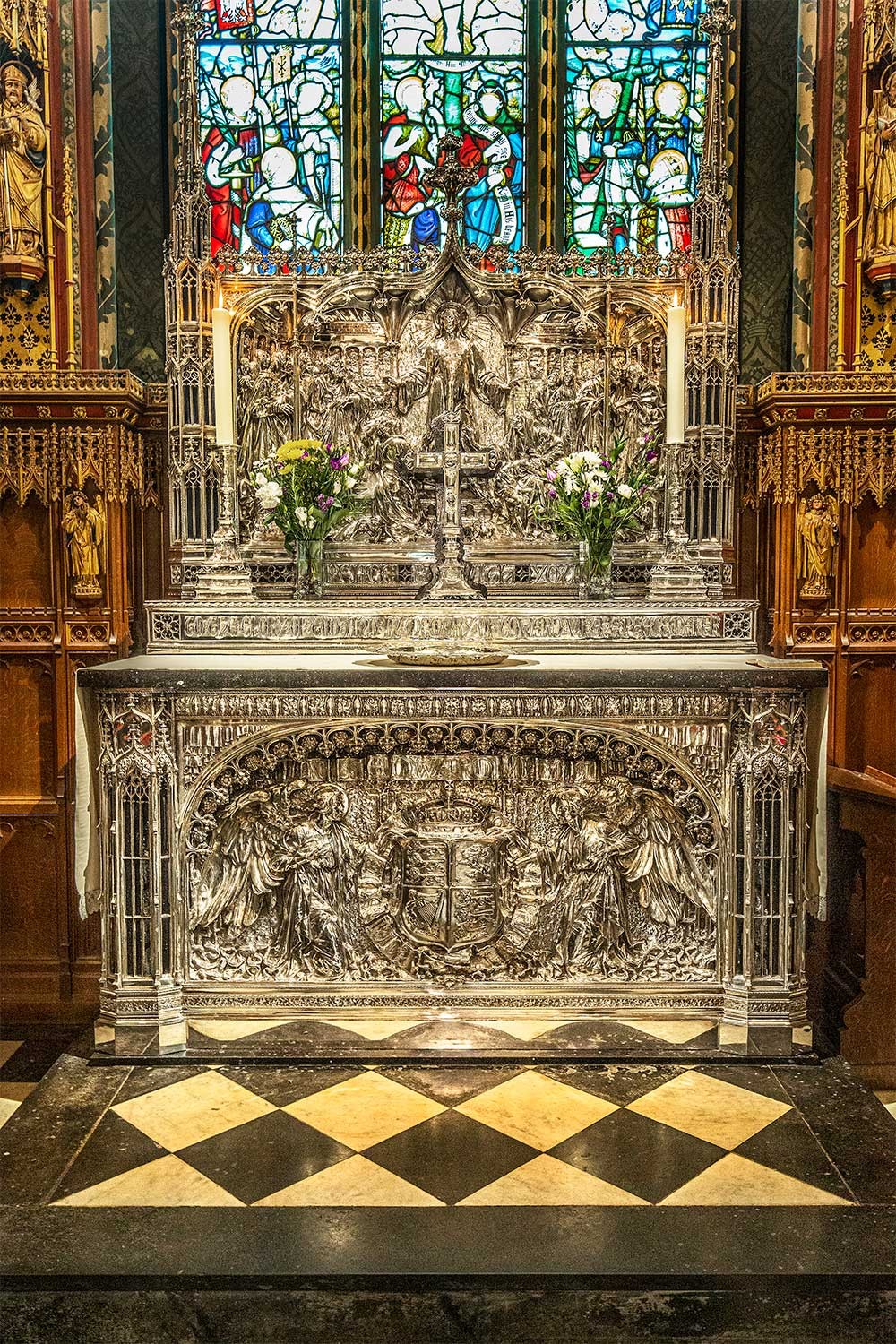
Particularly of interest are the church’s ornate and beautiful silver altar and reredos. They were presented to Queen Alexandra by the American department store owner, Rodman Wanamaker, as a memorial to her husband Edward VII, following his death in 1910. He also presented her with the silver pulpit and a silver 17th-century Spanish processional cross. Wanamaker was renowned for his philanthropy, and also presented a silver processional cross to Westminster Abbey. Of note also is a Florentine marble font and a Greek font dating to the 9th-century.
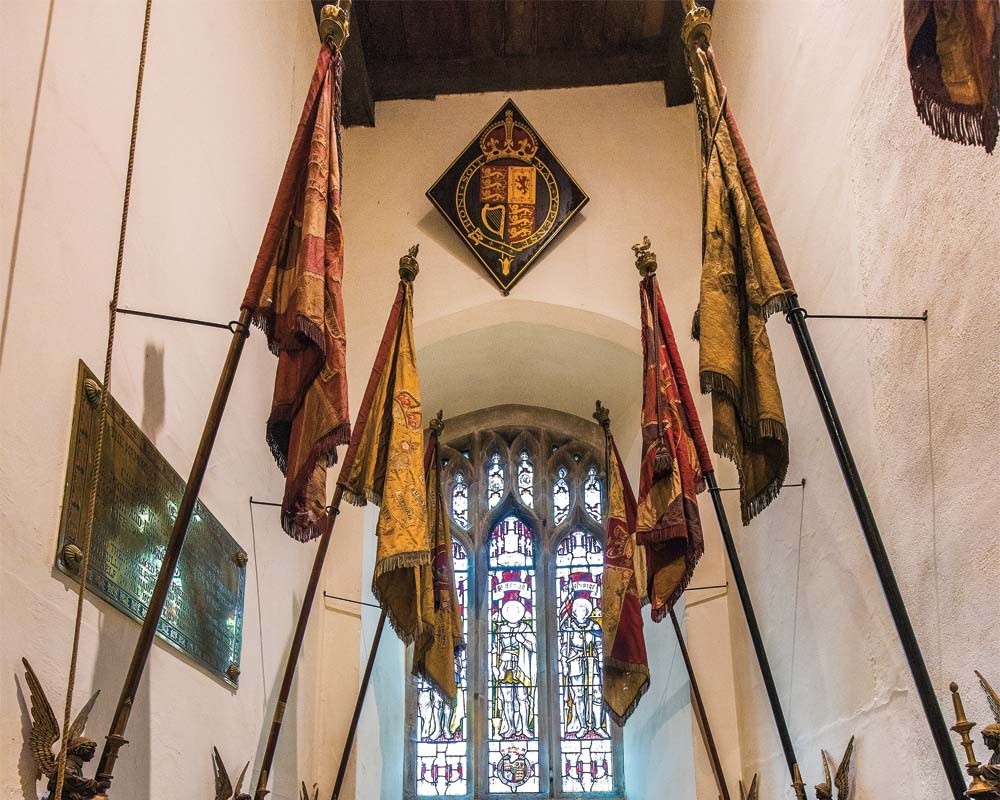
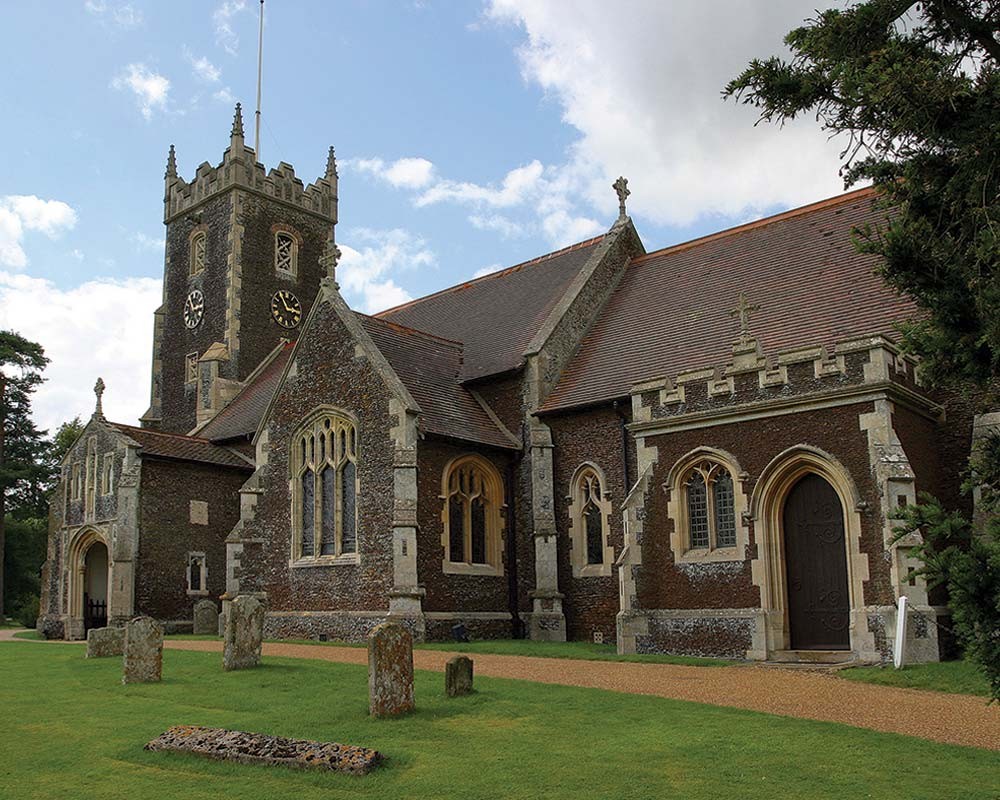
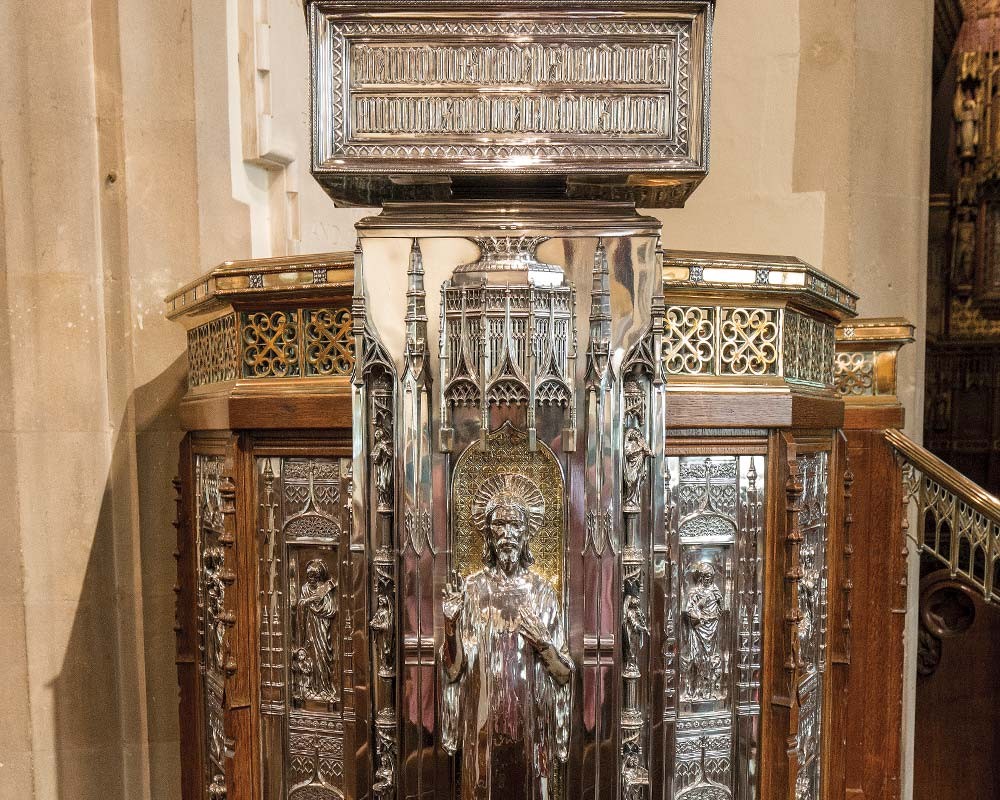
As most residents of west Norfolk know, Sandringham is particularly beloved by our present Queen, and she spends most of the winter at the house, including the anniversary of her father’s death and of her own accession. The Queen and Prince Phillip are often joined by their children and grandchildren over Christmas at Sandringham, and usually all members of the royal family in residence attend the traditional Christmas Day morning service at the church of St Mary Magdalene.
The church holds memorials to many members of the royal family, and a few are actually buried here. King George VI lay in state at the church after his death in 1952 before his public burial at St George’s Chapel, Windsor Castle. The church has also hosted several royal christenings including, most recently, Princess Charlotte (2015). Other royals to be christened here include the future King George VI (1896), King Olav V of Norway (1903), and Diana, Princess of Wales (1961). The first royal baby to have a public christening was Princess Eugenie of York in 1990.
If you’d like to see the spectacular interior of this church for yourself, during the winter the church is only open for services, but it will reopen to the public in April, and it’s definitely worth the wait!
